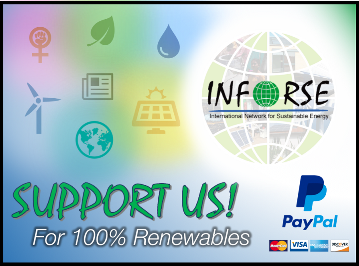|
|
|
|
|
|
|
|
|
|
|
|
|
|
|
|
|
|
|
|
|
| Follow Us: |
| Climate Change & Sustainable Development Possibilities & Pitfalls | |

| |
| Asger Garnak | |
|
The negotiations currently taking place under the Climate Change Convention (UNFCCC) are devoting much attention to the flexible mechanisms agreed to at the 1997 meeting in Kyoto of the Parties to the Convention. The Kyoto Protocol outlines a Clean Development Mechanism (CDM) which is to allow industrialized countries - Annex I countries - to achieve part of their reduction of greenhouse gas emissions through projects in developing countries. These projects must also contribute to the sustainable development of the country hosting the project. This prospect of additional transfers of technology makes the CDM attractive to developing countries. So far, the main focus in the negotiations on the CDM has been on certifying emission reductions, the ability to trade them etc. However, there is reason to be concerned about the missing focus of attention on ensuring that CDM projects will in fact be sustainable and contribute to host country development. Developing countries are sensitive to any interference with their national decision making, while the industrialized Annex I countries focus mainly on emission reductions and are not inclined to provoke any controversies over the issue. The result may turn out to be that no real tools are put in place to secure that CDM projects are sustainable and contribute to development. Consequently, all sorts of projects with major negative side effects - such as nuclear plants and large dams - may end up being eligible for CDM funding if only the host government approves them. And there would be no way to ensure that most CDM funding supports the (renewable) energy technologies of tomorrow. Many developing countries will find themselves in a relatively weak position when negotiating with potential foreign investors. Missing capacity may lead them to enter into project agreements that turn out to be far from ideal from their perspective. Furthermore, competition to attract investments may drive host countries to sacrifice national priorities. This could result in a downward spiral of “sustainability dumping”. When addressing these problems, focus should be on enhancing the capacity of non-Annex I countries to formulate national strategies and to implement them in concrete projects. Civil society and other national stakeholders should be actively engaged in these processes. Furthermore, environmental and social impact assessments should be built into project design and into the verification process that every CDM project will be going through. It should also be verified that projects do not violate other conventions, such as those on biodiversity and desertification. It should be obvious that North and South share a common interest in developing a CDM that makes real and long-term contributions to sustainable development while eliminating pitfalls. Please read further on INFORSE’s concerns at the article “CDM: A Pro-active Approach to Sustainable Development.” in this issue. or further information: INFORSE Secretariat: P.O. Box 2059, DK-1013, Copenhagen K, Denmark. Ph: +45-33-121307, fax: +45-33-121308, e-mail: inforse@inforse.dk, http: //www.inforse.dk/. |
|

| |
| Published in Sustainable Energy News |
|
|
Go back to main page of ISSUE #25 (529KB) 16 pages (1999-05-01) |
|
| Contact | |
| |
INFORSE Secretariat Klosterport 4F, 1. floor DK-8000 Aarhus C Denmark Phone: +45 86 22 70 00 Twitter: INFORSE_org Facebook: INFORSE Web: inforse.org E-mail: ove@inforse.org |
